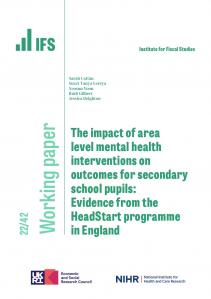Last week’s budget was, in the words of the chancellor, all about “getting it done”. One thing he certainly got done was to announce a set of policies that were promised before the election. Increase the national insurance threshold. Tick. Abandon cut in corporation tax. Tick. Forecast a current budget surplus. Tick. Announce a big increase in capital spending. Tick.
I could go on. There was nothing about this budget which should have surprised anyone who had read the Conservative manifesto. And that includes the big increases in spending and borrowing. Note my carefully chosen words though. Delivering a budget with a set of policy announcements is not the same as actually getting anything done. It’s the first step. Rishi Sunak announced the first steps on many journeys. Two in particular will be longer and more treacherous journeys than you might have guessed from his speech.
The first is the relatively straightforward sounding commitment to increase capital spending to 3 per cent of national income. If achieved that will take it to its highest level, as a fraction of national income, since the 1970s. It’s a commitment made in the face of a considerable consensus that more roads, railways, R&D and investment in schools and hospitals is a good thing. It should help grow the economy in the short run by expanding demand, and in the long run by boosting productivity. We remain, though, a very long way from getting anything done.
The Office for Budget Responsibility doesn’t even believe that all the money will be spent. They assume that 20 per cent of the announced increase will not happen. That simply reflects historic experience. Governments almost always fail to spend as much as they say they will on capital projects, especially when planned spending is being ramped up. Putting pressure on departments to spend more quickly is a pretty good way of making sure they spend badly. Just because there is a good case for more capital spending does not mean that there is a good case for any and all capital spending. We await the spending review later in the year for more details on what most of this new money will actually be spent on.
The second journey to which the chancellor alluded is that towards “levelling up”. Exactly what “levelling up” means remains a touch obscure, but seems broadly to be an ambition to increase wages and productivity in regions outside London and the southeast up towards those in that high wage corner of the country. If delivering effectively on increased capital spending is tricky, delivering on levelling up will be orders of magnitude more difficult.
Clearly the government sees the two as closely related. The ambitions are set out together in the budget red book in a section entitled “Levelling up and getting Britain building”. It has been a consistent theme of government rhetoric that shifting capital spending away from London and towards the regions will be at the centre of the levelling up agenda. With capital spending per head in London more than twice the level in some other regions it’s easy to see why this looks attractive.
It’s good to see a focus on spending to support future prosperity, and on trying to raise wages and productivity across the country. Two rather important notes of caution though.
For one thing this open handedness with capital spending is not being matched on the current side of the account. Despite Mr Sunak’s protestations, the figures he set out for the forthcoming spending review promise another three years of little cash for most public services. So we are in a period in which Whitehall departments will have more money for capital projects than they can sensibly spend, while struggling to find enough money to deliver public services. That’s likely to mean silly games-playing as officials waste their time trying to get spending defined as capital rather than current. It will almost certainly mean a misallocation of resources.
Not all so-called current spending is bad. It can easily have bigger long-term benefits than capital spending. In a report this month the Centre for Progressive Policy made the case for investment in so-called social infrastructure: things such as skills, mental health, social care programmes, early years and childcare. In each case there is good evidence that targeted funding can have significantly positive economic returns as well as delivering immediate social benefits.
Levelling up will require a sensible allocation of resources between hard capital programmes and social capital programmes. Under current plans there will be plenty of cash for the former and very little for the latter.
The bigger political issue for the government is that promises of levelling up are going to be very hard to deliver, however money is allocated. The biggest difference between London and the northeast is not that much more is spent on transport infrastructure in the one than in the other, it is that there are twice as many graduates in London. That’s because that’s where the high-skilled, high-paid jobs are. That’s why there are such big economic benefits to spending on transport projects in London. It is in a virtuous cycle. High population density and high productivity promote high transport spending, which promotes high productivity, and so on. Just acting on one variable such as transport spending in other regions will not by itself bump them into this virtuous cycle.
The differences between regions are rooted in history going back decades, even centuries. Having fundamental effects on them will require reallocating capital spending for sure, and a whole lot more — investment in skills, in health, in early years, and a coherent and long-term industrial strategy. It will be the work of a generation and more, not of a single parliament.
This article originally appeared in The Times and is used here with kind permission.








